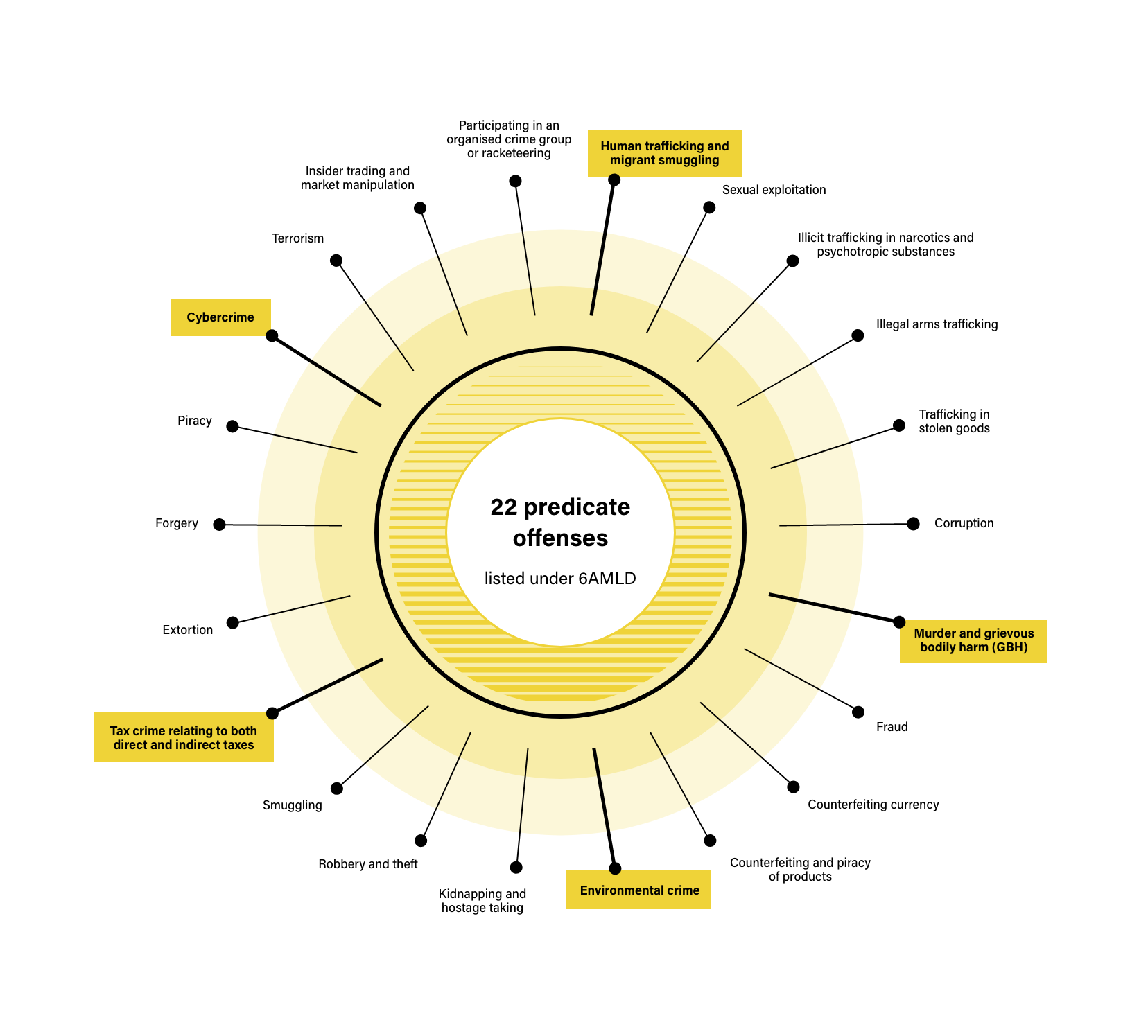
When is corruption not corruption?
Tune in as our expert panel explores how different jurisdictions interpret and handle corruption, unraveling the complexities that beg the question: when is corruption not corruption?
Watch on-demandCorruption is a pervasive issue that transcends borders and impacts economies, governance, and society. As the World Bank states, “Corruption hinders economic development by reducing domestic investment, discouraging foreign direct investment, encouraging overspending in government, and distorting the composition of government spending.” This insight underscores the critical need for effective measures to combat corruption, particularly in the realm of anti-money laundering (AML).
Corruption is the misuse of power or position for personal benefit, usually involving acts like bribery, fraud, or the manipulation of resources. The World Bank describes corruption as “the abuse of public office for private gain,” emphasizing the misuse of authority for illicit purposes. Similarly, the Organisation for Economic Co-operation and Development (OECD) characterizes corruption as “a widespread phenomenon in international business transactions,” encompassing a wide range of unlawful activities, including embezzlement and influence peddling. While these definitions capture key aspects of corruption, they remain broad and somewhat vague, leaving room for interpretation and adaptation across different contexts.
This ambiguity is similar to the challenges seen with defining politically exposed persons (PEPs), where regulators and global standard-setters provide flexible but non-exclusive guidelines. The United Nations Office on Drugs and Crime (UNODC) has noted that the lack of a standardized, global definition of corruption stems from the “legal, criminological, and political problems” that arise when trying to harmonize approaches across various countries. This flexibility allows for a wider application of anti-corruption measures but also complicates efforts to create uniform legal frameworks across different jurisdictions.
Just as there is no universal definition, corruption has no single root cause. The factors that drive corrupt activity vary widely depending on the context, shaped by political, economic, and social environments. This complexity makes addressing corruption challenging, as it often stems from a combination of influences rather than one isolated source.
However, anti-corruption agencies and global standard setters like the Financial Action Task Force (FATF) and Transparency International have identified several recurring causes that tend to lead to corrupt practices. A non-exhaustive list of these causes includes:
Understanding the different ways corruption can manifest is essential for effective governance and compliance frameworks. Several common types of corruption include:
Despite the increasing sophistication of financial crime techniques, ‘old school’ corruption cases still appear. One example involved former US Senator Menendez, who was found guilty in June 2024 of accepting gifts from foreign governments that included literal gold bars. This underlines the need for firms to continue monitoring for both ‘traditional’ forms of corruption alongside newer methods driven by anonymized technologies and currencies.
In a 2024 State of Compliance webinar, panelist David Hamilton noted how corruption and the regulations surrounding it are adapting to new challenges.
When public officials or individuals engage in corrupt activities, they are paid using money or assets they can’t easily use openly. This is where money laundering comes in – it allows criminals to clean and conceal these ill-gotten gains, making it harder for authorities to trace the funds back to their illegal origin. The FATF highlights that cracking down on money laundering is essential in fighting corruption, as it strips criminals of their profits and enables the prosecution of those involved in concealing dirty money.
Corruption is also officially recognized as a predicate offense to money laundering under the 6th Anti-Money Laundering Directive (6AMLD), meaning it’s one of the core crimes that generate illicit funds which then need to be laundered.

AML and counter-terrorist financing (AM/CTF) measures are crucial in identifying and recovering proceeds from corruption. In its assessments, the FATF evaluates countries’ ability to combat corruption through their AML/CTF frameworks, focusing on investigations, prosecutions, and the confiscation of assets linked to corruption-related offenses.
This is highlighted in Recommendation 32, which calls for countries to demonstrate robust AML/CTF efforts in relation to corruption. A strong emphasis is placed on transparency, good governance, and efficient judicial systems to ensure corrupt officials cannot launder their illicit funds. As the global watchdog notes, “significant weaknesses or shortcomings in these areas may impede effective implementation of anti-corruption measures.”
The FATF highlights several well-known examples of corruption in its 2011 Laundering the Proceeds of Corruption report. Although the report was published over a decade ago, many of the tactics used in these examples – from creating shell companies with complex ownership structures to bribing lawyers and other gatekeeper professionals – are still being used by corrupt officials today.
Augusto Pinochet: The former Chilean dictator is infamous for his authoritarian regime between 1971 and 1990, during which he was accused of serious human rights violations. In 2004, the US Senate investigated Pinochet’s financial activities and discovered that he, with the assistance of a US-based bank, diverted millions of public funds into personal accounts by creating offshore entities in tax havens like the Bahamas to conceal their origins.
Vladimiro Montesinos: As the head of Peru’s intelligence service under President Alberto Fujimori (1990-2000), Montesinos orchestrated various corrupt schemes, particularly through defense contracts. According to a report issued by the Office of Transnational Issues, Montesinos allegedly received millions in kickbacks for setting up the purchase of 22 military aircraft from Belarus in 1996. According to Montesinos’ accomplice, Peru spent $20 million for each plane, when in reality they each cost $5 million. Montesinos pocketed the extra $15 million for each plane and set up shell corporations to launder the funds.
Jean-Claude Duvalier: Often referred to as “Baby Doc,” Duvalier ruled Haiti from 1971 to 1986. He embezzled millions of dollars from the Haitian government and funneled them into foreign bank accounts and investments. Lawyers played a critical role in disguising his wealth by holding accounts on behalf of the Duvalier family.
Frederick Chiluba: The former President of Zambia was accused of misappropriating substantial government funds during his time in office from 1991 to 2002. He utilized various law firms and set up complex corporate structures to obscure the flow of embezzled money. Courts noted that lawyers facilitated the movement of these funds into personal accounts and other investments, effectively laundering money that originated from government coffers.

Tune in as our expert panel explores how different jurisdictions interpret and handle corruption, unraveling the complexities that beg the question: when is corruption not corruption?
Watch on-demandDue to the various forms corruption can take, there’s no single blueprint for combating it. However, firms can still take significant steps to mitigate risks by adopting a risk-based approach. By tailoring their strategies to specific threats and vulnerabilities, organizations can effectively guard against corruption. To mitigate exposure to corrupt activities, compliance teams can implement the following best practices:
To learn more about mitigating corruption risks, read our blog, How to strengthen anti-corruption frameworks: 4 actionable insights.
At ComplyAdvantage, we provide firms with market-leading global risk and compliance intelligence to help compliance teams effectively monitor illicit financial activities, including corruption. Our AI-powered data and intelligence layers include:
1000s of organizations are already using ComplyAdvantage. Learn how to streamline compliance and mitigate corruption risks with industry-leading solutions.
Get a demoOriginally published 30 October 2024, updated 11 February 2025
Disclaimer: This is for general information only. The information presented does not constitute legal advice. ComplyAdvantage accepts no responsibility for any information contained herein and disclaims and excludes any liability in respect of the contents or for action taken based on this information.
Copyright © 2025 IVXS UK Limited (trading as ComplyAdvantage).